HONOUR LACKEY
Visitor Engagement Intern
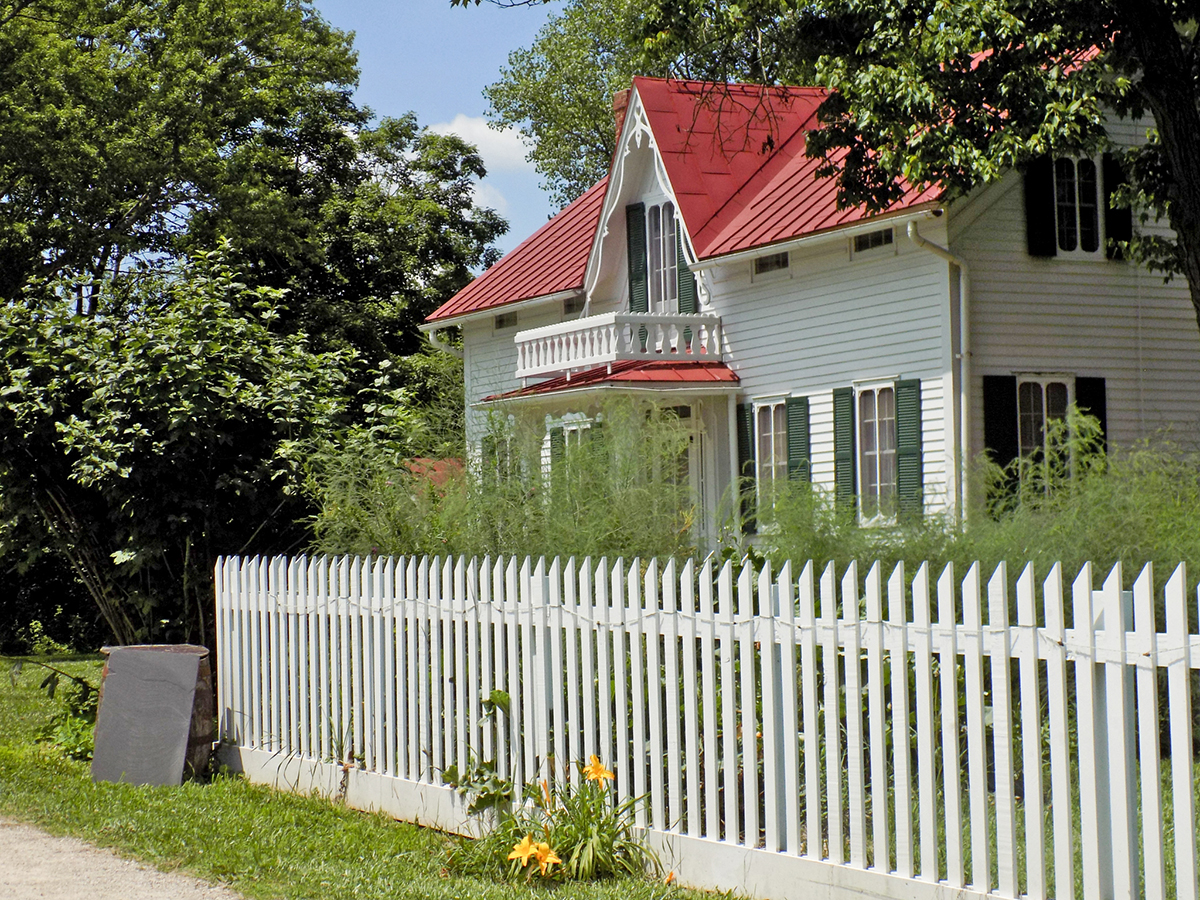
As a student at Ohio State University I took a class in my second semester that centered around films about early America, sparking an interest in the way people lived centuries ago. Combining this with my affinity for historical fashion and literature, it’s surprising that I had never visited the Slate Run Living Historical Farm.
While I’ve spent time merely watching YouTube videos about historical dressmaking and recipes of the 1880s, Ann Culek, the program manager at Slate Run Farm, has spent 30 years exploring and experiencing the lives and practices of 1880s Ohioans.
The ladies that ran Slate Run Living Historical Farm in the 1800s were clad in long dresses, bonnets and aprons, all handmade. The women that work at the farm today wear period clothing, hand made by themselves — a testament to their commitment to historical accuracy.
The Slate Run Farm serves as an immersive experience for anyone curious about what it was like to live as an Ohio farming family in the 1880s. With crops consisting of wheat and corn, plenty of livestock, and a fruitful garden, the interpretive aides are tasked with maintaining the land.
Ann told me that the origins of the concept arose from feelings of nostalgia and curiosity. In 1976, the year of the United States Bicentennial, patriotic feelings were stirred and an interest in living history (the practice of immersive, interactive presentations of historical life) emerged. Members of the public were fascinated with the lives of everyday people in the 1800s, a time when Ohio served as a hub for commerce and agriculture. It was for these reasons that this parcel of land was to become the Living Historical Farm.
On the day of my visit, the workers were waiting for a delivery of straw and preparing for a weekend of threshing, a process in which edible grain is loosened from wheat with a mechanism led by horses. This is time-consuming work, and they planned to thresh 6 acres of wheat. “The family that lived and worked on this farm in the 1880s did 60 acres,” Ann said.
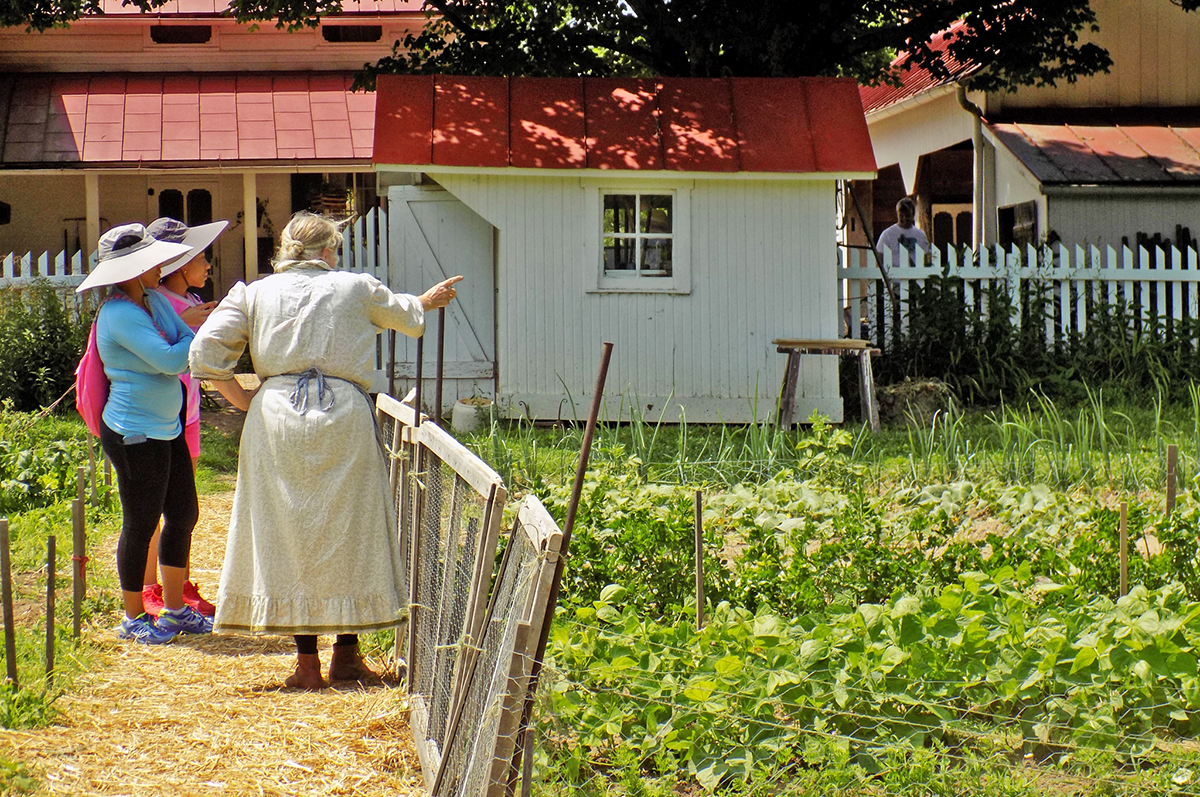
Interpretive aides Natelle Ball and Donna Abel said that while the men are primarily working in the field, the women’s duties are much more widespread. “We do the types of chores women would have done in the 1880s. It was very differentiated, men’s work and women’s work,” Abel said. “Women would take care of the house, the garden up there, the chickens, the children, food. A really important aspect would be growing and preserving food.”
This work, while necessary to maintain the house, is also on display for the public as an educational aspect for visitors. While the farm is open for any visitor to explore on their own, the farm often hosts school groups of varying ages and grades.
“During the school season, we have three different types of school groups. For self-guided school groups, we give them an introduction about the farm and everything like that, and then the teachers will wander around the farm with them while we are in different places doing things,” Natelle said. “In an hour we can have up to 125 school kids.”
The farm also offers guided groups, led by the women and the farmers. The workers divide the students into four groups and rotate them through different areas of the farm and house. They provide a 4th-grade specific program as well, as that is the time when Ohio history is taught with a heavier focus in their classes. “They could play games, help with chores, they might bake something in the kitchen, they may drive the horses,” Natelle said.
It was at this point in our conversation that the straw arrived, leaving me to explore the farm at my own leisure. I was immediately drawn to the sheep, who were piled in a heap, huddled in the shade in hopes of staving off the exhausting midday heat. Watching them with me was a woman and her daughter, who told me it was their first time ever visiting the farm. Petting the sheep as they lazily munched on grass, she said, “I didn’t even know this place was here, and now I’m so excited.”
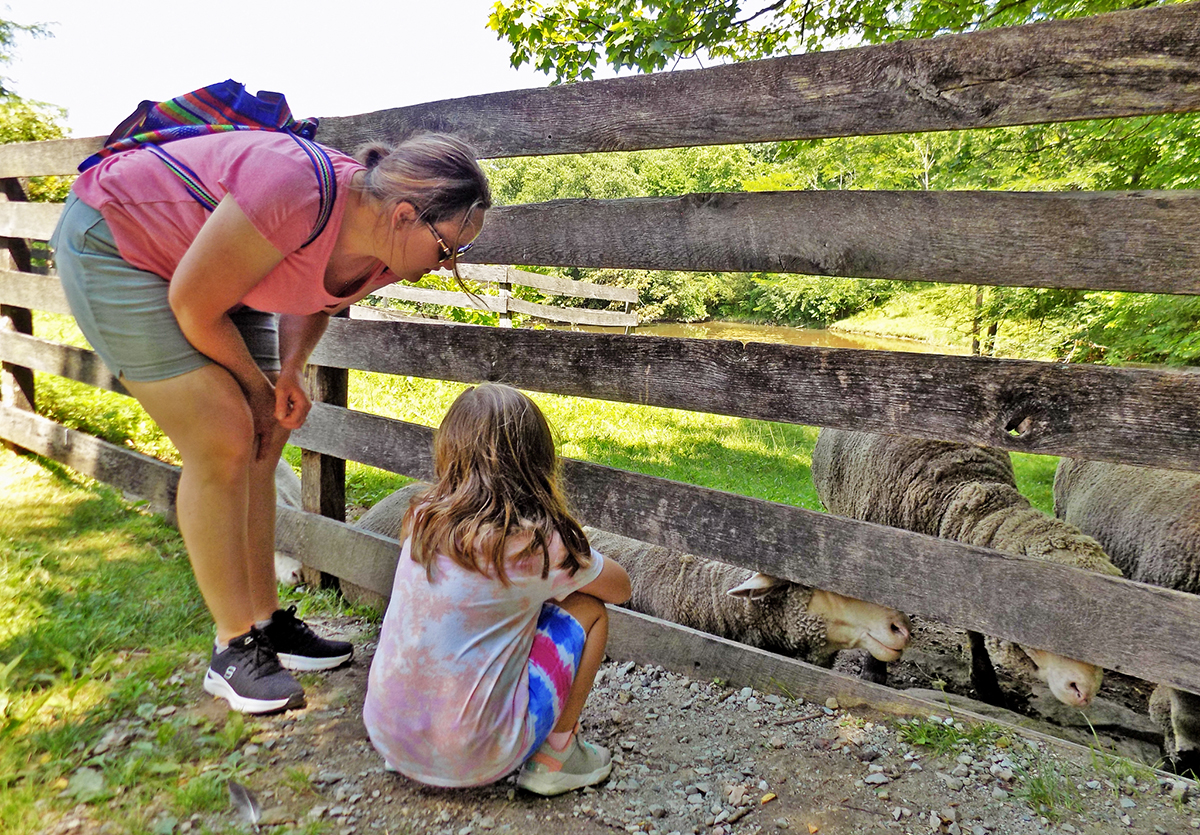
I ended my exploration at the house, built on site in 1856 by Isaac Fridley. The first floor is open to the public and features a historically accurate parlor, dining room and kitchen.
One furnishing caught my eye: the 1880s Singer sewing machine. It reminded me of my own family. My mother loves to quilt and sew, and she made sure to teach me the basics of sewing a button and embroidery. In the 1980s, before my mother was even old enough to take up an interest in sewing, my great-grandmother gifted her a Christmas tree ornament of an 1880s-era sewing machine. Ever since I could remember, that 1880s sewing machine has lived in miniature size on my Christmas tree. Seeing it in full-scale, just like the ornament and the real Singer machine my great-grandmother used (and never replaced, even when lighter, more efficient models were made), reminded me of my family and my history. I felt, in my own way, connected to this era through this work, regardless of how time has transformed these practices.
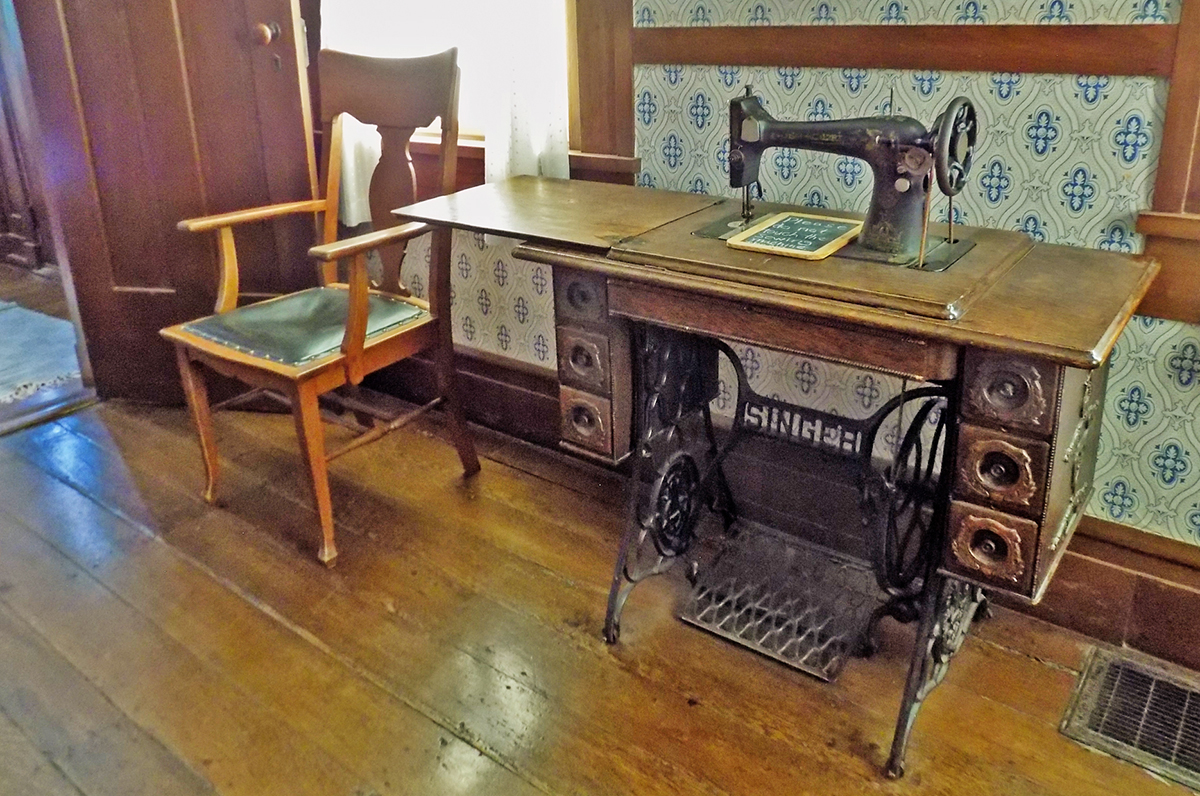
These personal connections are a part of what makes the living history experience so special. As a country so sturdily built upon agriculture, exploring the farm feels like a step back in one’s own history, regardless of your status as an Ohio native, transplant, or visitor passing through.
Before I left, I made sure to ask the women of Slate Run Living Historical Farm one last question: What is the modern amenity you’re most grateful for after a day working on the farm?
Natelle immediately said, “The dishwasher.” Air-conditioning was agreed upon by the three. Then Ann said, “This time of year, it’s just getting into shorts and a T-shirt. You know that feeling of standing there in your swimsuit, getting ready to hit the cool water? Can you imagine being a 19th-century woman? That would’ve never even crossed your mind — it’s not even in your sphere of being, that you could do that.”
Living in 2023, we have the luxury of visiting the farm and reconnecting with history from the comfort of shorts and tank tops. But even in this modern attire, we can connect with history as it happens in front of us, with the familiar sights and sounds that remind visitors young and old of their family, their roots, and the hard work that made and continues to sustain Ohio.
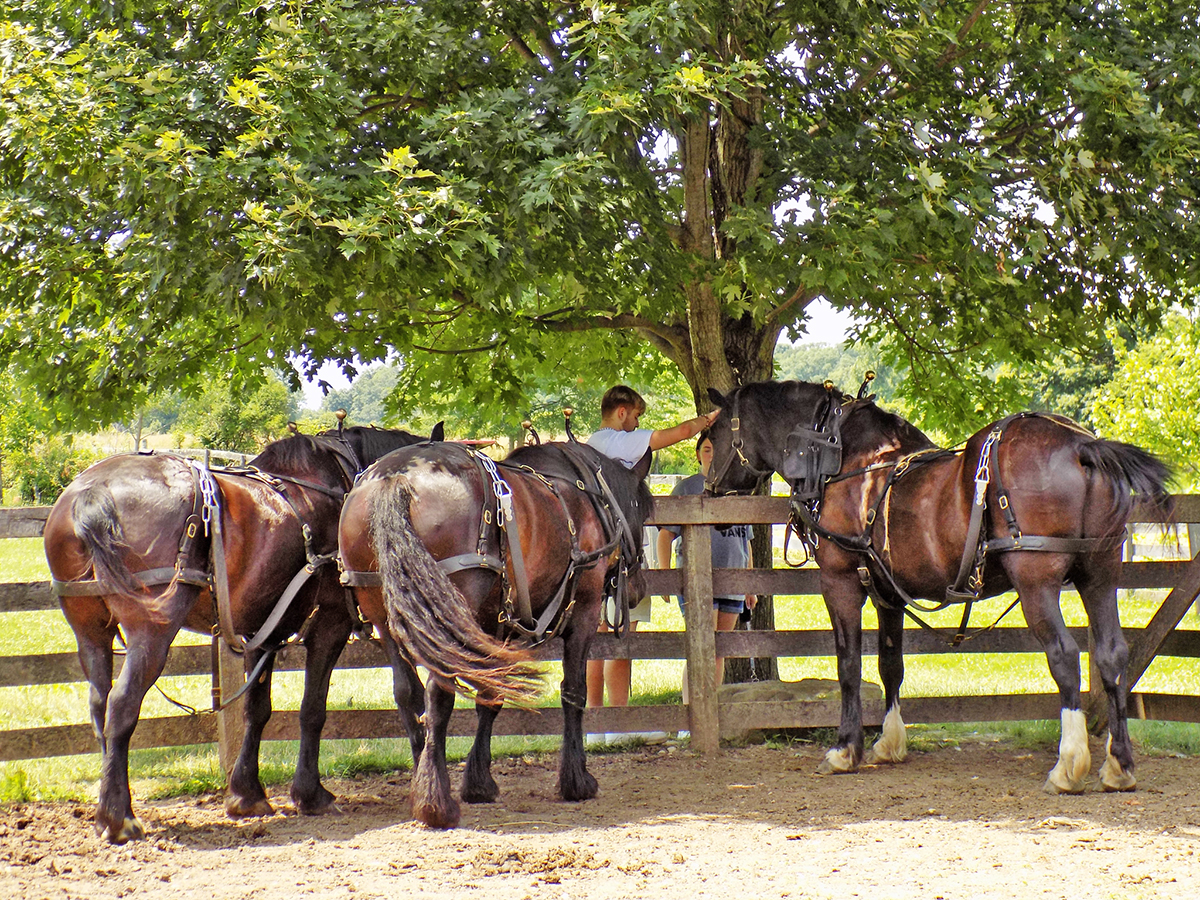

My family has visited many times and shared with others. What a wonderful way to spend part of a day. A gem in the parks system.